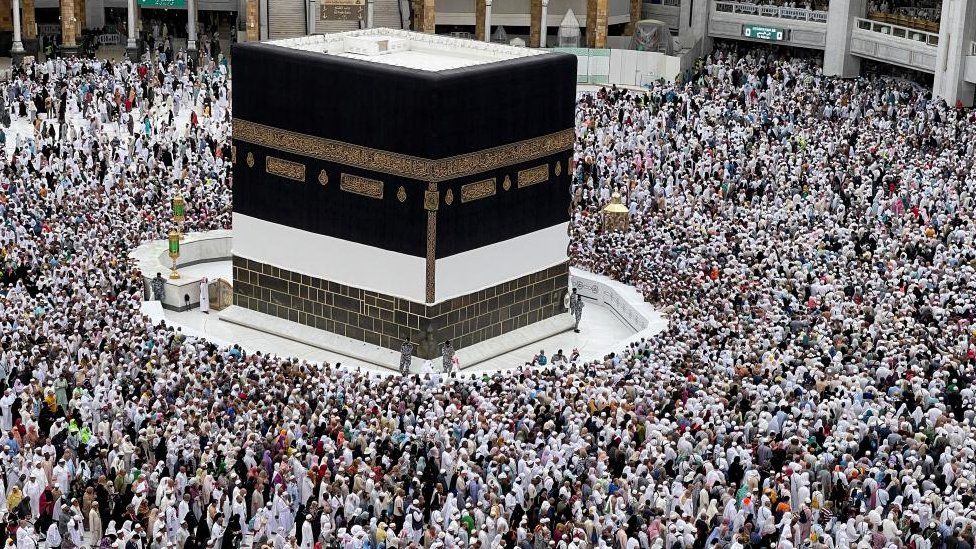ARTICLE AD BOX
By Sebastian Usher
BBC Middle East Editor
 Image source, Reuters
Image source, Reuters
A protective barrier stopped pilgrims touching the Kaaba and Black Stone during the pandemic
Pilgrims in the Great Mosque of Mecca in Saudi Arabia can once again touch and kiss one of Islam's most revered relics - the Black Stone set in the sacred Kaaba building.
A barrier around the Kaaba that was set up at the start of the Covid-19 pandemic has now finally been removed.
Pictures show excited worshippers clamouring to get near the Black Stone.
The barrier, set up for social distancing, has been removed just in time for the Umrah pilgrimage season.
The Hajj is a pilgrimage to Mecca that Muslims who are able to must perform at least once in their lifetime. It takes place at a set time of year: in 2022, it ran from 7 to 12 July.
The Umrah pilgrimage can be undertaken at any time of the year and attracts millions from around the world. Pilgrims may also visit the holy city of Medina.
Saudi Arabia dropped most of its stringent Covid-19 restrictions earlier this year, which meant that the Hajj pilgrimage last month was nearly back to normal for the first time since the pandemic started.
In 2020, only 1,000 people were allowed to attend Hajj, which is the holiest of all pilgrimages for Muslims. Only worshippers from Saudi Arabia were allowed to take part, and international pilgrims were banned.
Attendance increased to 60,000 in 2021, and in July this year, there were more than a million pilgrims worshipping in Mecca.
However that is still low compared to the pre-Covid numbers - in 2019 an estimated 2.5 million people travelled to Mecca for Hajj, according to Statistica, making it the world's largest human gathering.
In Islamic tradition, the Black Stone, which is set into the eastern corner of the iconic square Kaaba, is believed to date back to the time of Adam and Eve. It was already held as sacred before the rise of Islam, and is said to have originally been white, but turned black through receiving the sins of those who touched it.
Additional reporting by Tiffany Wertheimer
The 2020 Hajj was much more thinly attended than in previous years

 2 years ago
35
2 years ago
35








 English (US) ·
English (US) ·